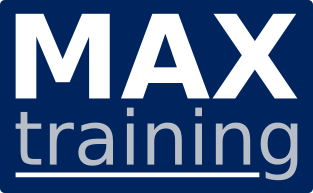IBM InfoSphere DataStage engine Administration for Information Server v11.5
Code: 2M520G-SPVCOverview
This course teaches Information Server and/or DataStage administrators to configure, manage, and monitor the DataStage Engine which plays a crucial role in Information Server. It not only runs high performance parallel ETL jobs designed and built in DataStage. It also supports other Information Server products including Information Analyzer, QualityStage, and Data Click. After introducing DataStage parallel jobs and the Engine that runs them, the course describes DataStage project configuration, the Engine’s development and runtime environments, and the Engine’s data source connectivity. In addition the course explains how to import and export DataStage objects, how to run and monitor DataStage jobs through the command line and GUI, and how to use some important Engine utilities.
If you are enrolling in a Self Paced Virtual Classroom or Web Based Training course, before you enroll, please review the Self-Paced Virtual Classes and Web-Based Training Classes on our Terms and Conditions page, as well as the system requirements, to ensure that your system meets the minimum requirements for this course. /terms
Audience
This course is for those who will be administering Information Server and DataStage.
Prerequisites
It is recommend that students take KM510 “IBM InfoSphere Administrative Tasks for Information Server v11.5” course
Objective
After completing this course, you should be able to: - Describe how the DataStage Engine is used within Information Server - Describe how the engine achieves high performance through partition parallelism - Describe the DataStage job compilation process - Describe the engine runtime process and environment - Describe the purpose and format of the DataStage configuration file - Describe how to configure the engine using environment variables - Describe how to configure data source connections - Describe the ways of running DataStage jobs - Describe how to monitor DataStage jobs and the runtime environment - Describe engine workload management - Import and export DataStage jobs and other engine objects
Course Outline
1: Introduction to the Information Server (DataStage) engine• Information Server architecture• How the DataStage Engine is used in Information Server• DataStage Engine features
2: Elements of a DataStage job• Anatomy of a DataStage parallel job• Explore the elements of an example DataStage job, including its stages and job parameters• Understand the OSH that is generated by the job during compile• Log into Designer• Import DataStage jobs• Open a DataStage job and explore its elements• Examine the OSH generated from the job3: Engine architecture• Partition parallelism• Runtime architecture• Configuration files• The “Score”• Examine the Configuration file• Run a DataStage job• Examine the Score4: Engine project configuration• DataStage project authorizations• Runtime Column Propagation (RCP)• Environment variables• Create a DataStage user and assign DataStage project roles• Set environment variables• Configure a DataStage project in DataStage Administrator5: Configuring database connectivity• Configuring ODBC data sources• Configuring native database connections• Enable a DataStage project to access DB2• Setup ODBC data source connections• Test ODBC connectivity• Create a data source connection in Metadata Asset Manager
6: Running DataStage jobs• Running jobs from the command line• Monitoring jobs in Director and the Operations Console• Workload management• Starting and stopping the Engine• Run a job from the command line• View the job log from the command line• Monitor DataStage jobs in DataStage Director• Monitor jobs in the Operations Console• Explore Workload Manager• Start and stop the Engine7: Engine utilities• Data set utilities• Multiple job compile• Resource estimation tool• View a data set using the Data Set Editor• View a data set from the command line• Estimate the resources of a DataStage job using the Resource Estimator tool• Run the Multiple Job Compile utility8: Importing and exporting DataStage objects• DataStage Designer exports and imports• Command line exports and imports• Import and export DataStage objects in Designer• Import and export DataStage objects using the DSXImportService command
Price (ex. VAT)
Duration
Schedule
Please send us a message with the form below
Delivery methods
- Classroom
- On-site (at your location)
- Virtual (instructor online)
